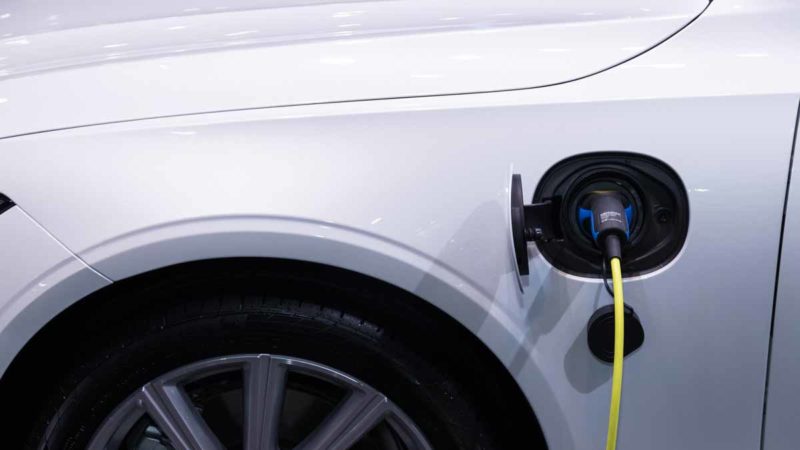Watching the Tesla Model S electric car outperform Australia’s most powerful production car, leaving the onlooking rev-heads open mouthed, was an exhilarating sight.
Last night’s Fight for Plant A episode on the ABC was exceptional. Not just for the sheer entertainment value of watching Craig Reucassel’s Electric Vehicle (EV) leave the HSV supercar in the dust, but also for the rare positive portrayal of an EV on mainstream media.
Australian EV policy, like the Australian EV market, is barren. So barren, in fact, that Australia must look to the other side of the world for EV policy inspiration. EVs in Australia make up just 0.6% of total vehicles sales, whilst in Norway one in two car sales are electric.
If you include plug in hybrids (with both a gasoline engine and an electric motor), EV sales rose to 70% of all Norwegian car purchases in April. That’s why The Australia Institute wants to explore the keys that helped drive Norway’s electro-mobility success.
This Thursday, the Australia Institute Webinar Electrifying Our Roads: Norway’s Way, features Christina Bu, head of the Norwegian Electric Vehicle Association and Giles Parkinson, founder and editor of Renew Economy and The Driven, in conversation on Norwegian electric vehicle policy and its application to Australia.
It has been 18 months since the Senate Select Committee released its report detailing how Australia could embrace the opportunities around EVs. Of the Committee’s 17 modest recommendations, the Federal Government agreed to just one – the development of a national EV strategy.
The EV strategy was originally expected in 2019, then delayed to mid-2020. If you want a further progress update, you’ll have to read all the way through the Minister for Energy and Emissions Reduction Angus Taylor’s press release on a CEFC investment, where he quietly confirms at the end there will be a further delay.
And if you go to the actual website for the national vehicle strategy you are left with this apt message:

This is disappointing but not unexpected from a government that spent an election campaign bad-mouthing EVs.
The Coalition Government’s bizarre tirade against EVs saw the Prime Minister and his Ministers reject the Labor Party’s claim that EVs could be charged as quickly as eight minutes, accuse the Labor Party of forcing citizens to purchase expensive EVs, manufacture a ‘war on the weekend’, and claim EVs lacked the power to tow trailers and boats.
These claims were later revealed as baseless, including by the co-founder of JetCharge who reminded the Energy Minster on Twitter that EVs could be charged in 8 minutes by the infrastructure the Government had funded!
For a country so dependent on foreign oil, with no credible climate and energy policy and no fuel efficiency standards, the transition to electromobility should be a priority.
Australia currently imports around 90 per cent of its liquid fuel. Its three weeks of domestic oil reserves make it ill-equipped to deal with a liquid fuel security crisis and recent plans to access American reserves in the case of an emergency do little to assuage Australian concerns.
The transport sector contributes one fifth of the nation’s emissions and growing. Additionally, when it comes to vehicles, Australia is a taker not a maker, despite having significant critical mineral resources and potential to build EVs and batteries. All in all, there are many reasons for Australia to move away from internal combustion engine vehicles (ICE) towards EVs.
Government inaction has had a palpable effect on the Australian EV market. The Volkswagen e-Golf is one of many EV models unavailable to the Australian market, due largely to the dearth of EV policy and emissions standards. Just last month, Renault pulled the electric Zoe from the Australian market, citing lack of Government EV policy as a contributing factor.
But the end of the ICE age is coming.
The Australian EV market study, prepared by Energeia for the Australian Renewable Energy Agency (ARENA), estimates that with no intervention Australia will reach 50 per cent of EVs in total car fleet around 2045.
A large-scale transition to EVs is inevitable. The question is whether that transition will be well managed and fast-tracked in line with the goal of limiting global temperature rise to 2°C. Polling by the Australian Electric Vehicle Council, out today, shows consumers want to see governments providing subsidies and charging infrastructure for EVs.
Whilst federal politicians in Canberra sit on their hands, local ACT politicians are miles ahead. The ACT waives stamp duty for EVs and offers a 20 per cent discount on EV registration fees.
The ACT Government is involved in a world-first trial led by the Australian National University (ANU) that will see 51 Nissan LEAF EVs deployed across the Territory as part of the state government’s vehicle fleet, providing back up power and essential grid services.
On the other side of the globe, Norway has emerged a leader with steadfast support throughout the decades and across successive governments. The Norwegian Government has implemented a suite of EV polices and streamlined the roll out of electric vehicle infrastructure.
At the core of the Norwegian approach is the mantra that EVs should be cost competitive at point of purchase. This has been achieved through reduced vehicle registration tax, reduced company car tax and zero VAT, and enhanced through exemptions from road tolls, access to bus lanes and free access to ferries.
The Norwegian experience proves that policy is a powerful driver. But Australians don’t hear enough about these feats or how to achieve them. The Norwegian EV experience is a story of innovation, leadership, and success. Australia would do well to listen and learn.
Register here for the Australia Institute Webinar: Electrifying Our Roads Norway’s Way, Thursday August 20 at 04:00 PM.
Richie Merzian is Climate & Energy Program Director and Audrey Quicke, Researcher at independent think tank, The Australia Institute

